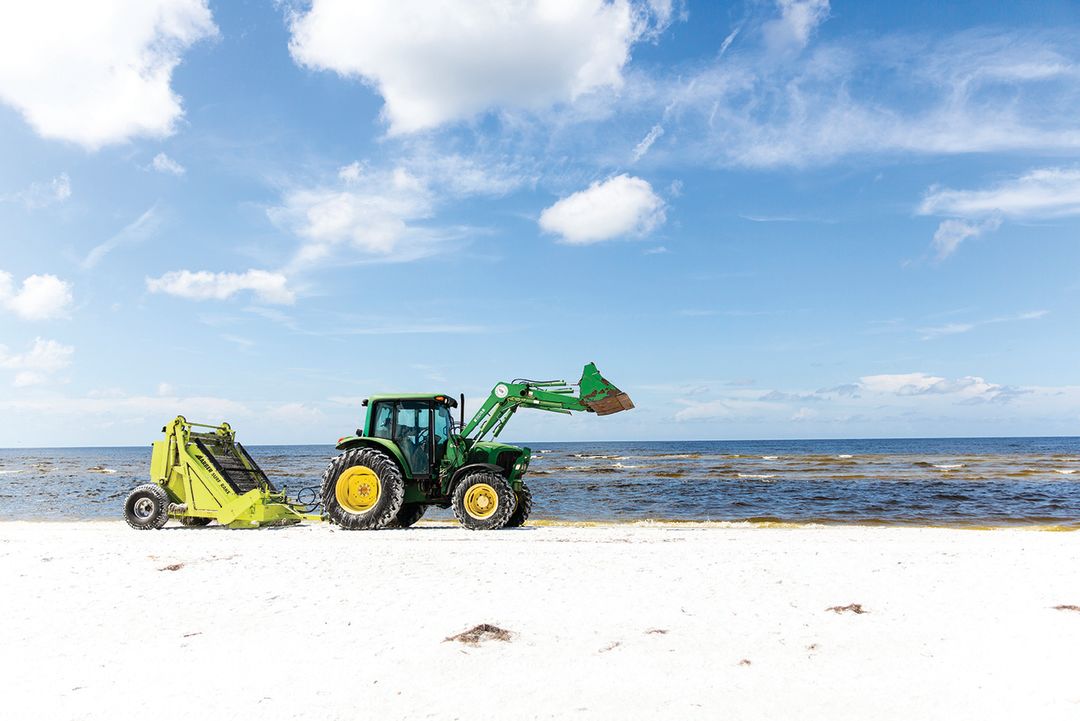A Year of Catastrophic Algal Blooms Has Local Seafood Companies Hoping For a Rebound

A truck collects dead fish on Lido Beach last year.
Image: Karen Arango
Last summer and fall, as red tide and other harmful algal blooms left dead sea life rotting on local beaches, Siesta Key was often a ghost town. “There were days when you could see tumbleweeds blowing down the street,” says Scott Dolan, the owner of Big Water Fish Market, a small seafood shop and restaurant near the southern end of the key. His business suffered a dramatic drop-off because of the catastrophe. He estimates his sales were down about $30,000 a month from September through November when compared to the previous year.
Dolan’s business wasn’t damaged because he couldn’t serve the fish he normally does. He kept serving the grouper and snapper he always has. The declines were caused mostly by perception. While the algal blooms killed off scores of fish that live close to the shore, such as mullet, trout and flounder, and caused shellfish beds to be shuttered, many of the area’s most popular food species avoided red tide altogether, because they live in waters that are farther out. “Red tide created a false feeling that eating fish wasn’t safe,” Dolan says. It also left people feeling disgusted. “When you’re walking down the beach and seeing dead fish, it’s not very appetizing,” he says.
Overall, the Gulf seafood industry experienced huge losses last year. Commercial catches were down 33.8 percent in Sarasota County between 2017 and 2018. In Manatee County, which has a much more robust seafood industry, the catch dropped by 55.1 percent between 2017 and 2018, a loss driven in part by a major decline in mullet production. Unlike offshore species like grouper and snapper, mullet live close to the coast and were more affected by red tide. The black mullet catch in Manatee County last year totaled just under 771,000 pounds, down from almost 1.6 million pounds in 2017.
Last year’s catastrophe left businesses hoping for a strong comeback this year. "Right now we are in a bit of a recovery stage," Dolan says. "We're hoping for a great season." Hopefully, that means more tourists rolling up and down Siesta Key, and fewer tumbleweeds.



